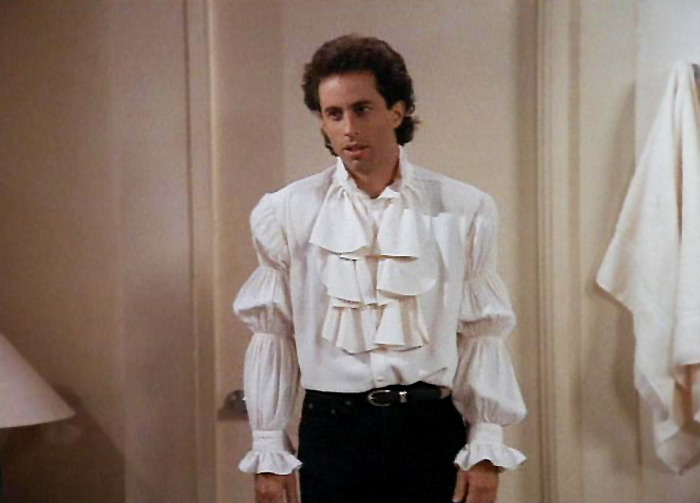by Robin Itzler, OC-Breeze.com
The Emmy Awards recognizes excellence in television broadcasting and was first handed out in 1949, but only to honor Los Angeles programs. By the 1950s, it became a national award for all programming in the United States. It wasn’t until 1974 that daytime programming had its own award ceremony.
Behind the accolades, however, television remains a business driven by marketing.
In its early years, companies such as Colgate-Palmolive, Texaco and General Electric were often the sole sponsor of a show named after them. This meant they could market and advertise their own products and services. Today, sole sponsorships still occur (such as the Hallmark Hall of Fame), but as specials rather than weekly programs.
Behind many award-winning programs are stories that offer lessons for success. Here are three of my favorites.
Seinfeld
When Seinfeld debuted in 1989, it wasn’t an immediate hit. By all accounts, the show should have been cancelled. However, NBC executives nurtured the program, allowing Jerry, George, Elaine and Kramer time to find an audience. By the middle of its third season, Seinfeld was the program everyone talked about the next day.
Seventy-six million viewers watched its finale in 1998, making it the third most-watched series finale behind M*A*S*H and Cheers. The commercials marketed during the broadcast were approximately $2 million for 30 seconds.
Just like Seinfeld, many successful people take time to develop before they soar to success. In fact, the first time Jerry Seinfeld walked on stage at a comedy club, he got stage fright and froze. The audience quickly booed him off.
Confident in his comic abilities, he returned the following night and successfully performed to an appreciative audience.
What would have happened if the club manager hadn’t give Jerry a second chance to prove he could do it? Even more, how many other comics would not have tried again? Between the manager believing in the young comedian and Jerry believing in himself, his sardonic look at life was about to make him a comic legend.
As Jerry would say, “Not that there’s anything wrong with that.”
Happy Days
Fearing he would look like a hoodlum, television censors wouldn’t allow Fonzie to wear a leather jacket. In early 1974 episodes, he wore a cotton jacket with the collar turned up. As the Fonzie character became popular, censors relented and he was allowed to wear leather.
(Broadcast censorship started in radio and first occurred in 1944 when Eddie Cantor and Nora Martin were singing “We’re Having a Baby, My Baby and Me.” The sound was cut off during the song.)
Interestingly, Henry Winkler’s Fonzie was conceived as a secondary character slated to appear in only a few episodes. It quickly became obvious that America adored Arthur Fonzarelli and wanted to see more of him with the Cunningham family.
When the show went off the air in 1984, Winkler had appeared in every episode and was an American icon; his leather jacket would one day hang in the Smithsonian.
Successful people know how to take advantage of small opportunities that others might not recognize. Henry Winkler turned a small character role into the legendary Fonzie, eventually becoming the show’s star.
How many other actors would have performed as the script demanded and then continued looking for their big break, not realizing this was their big break?
It’s the same in the working world, especially corporate America where employees are often pigeonholed in a position. (Think of the secretary who seeks to advance into management, but is never promoted for a variety of reasons.)
Believing in yourself and what you can do rather than accepting what others assume you can’t do is often the difference between mediocre and outstanding performance. Opportunities are everywhere, but sometimes you have to create them yourself. Fonzie would give you thumbs up and say, “Aaaay!”
The Ed Sullivan Show
On Sunday night, February 9, 1964, I was doing homework when my father yelled out, “Robin, come look at these long haired guys!”
Our small black and white television had four young men singing while teenage girls were screaming and crying for John, Paul, George and Ringo. This was The Beatles first live television performance in America.
When they finished their second song, it was pandemonium in the theater and throughout America as hysterical girls were shouting for The Beatles to remain on stage. They would sing two more songs later in the program — with me screaming along with the teenage girls in the audience.
As the hysteria and mayhem continued, Ed Sullivan introduced the next act on his show: international magician Fred Kaps. Revered by magicians throughout the world, Fred Kaps was the only three-time Fédération Internationale des Sociétés Magiques Grand Prix winner.
Rather than be overwhelmed about following the Fab Four, the Dutch-born Kaps gave an outstanding magical performance that was seen by 73 million viewers, many of whom were watching the show just to see The Beatles.
How many times in our professional and personal life do we follow an act like The Beatles?
If you find yourself in that situation, be like Fred Kaps who gave a performance as if everyone had tuned into The Ed Sullivan Show to see him! Carry yourself with confidence and it won’t ever matter who you follow.
“Live on this stage…” Ed Sullivan would introduce you — and all the applause would be yours.
This post was originally published on www.oc-breeze.com as an editorial. Photo courtesy of iconiccostumes.tumblr.com.

